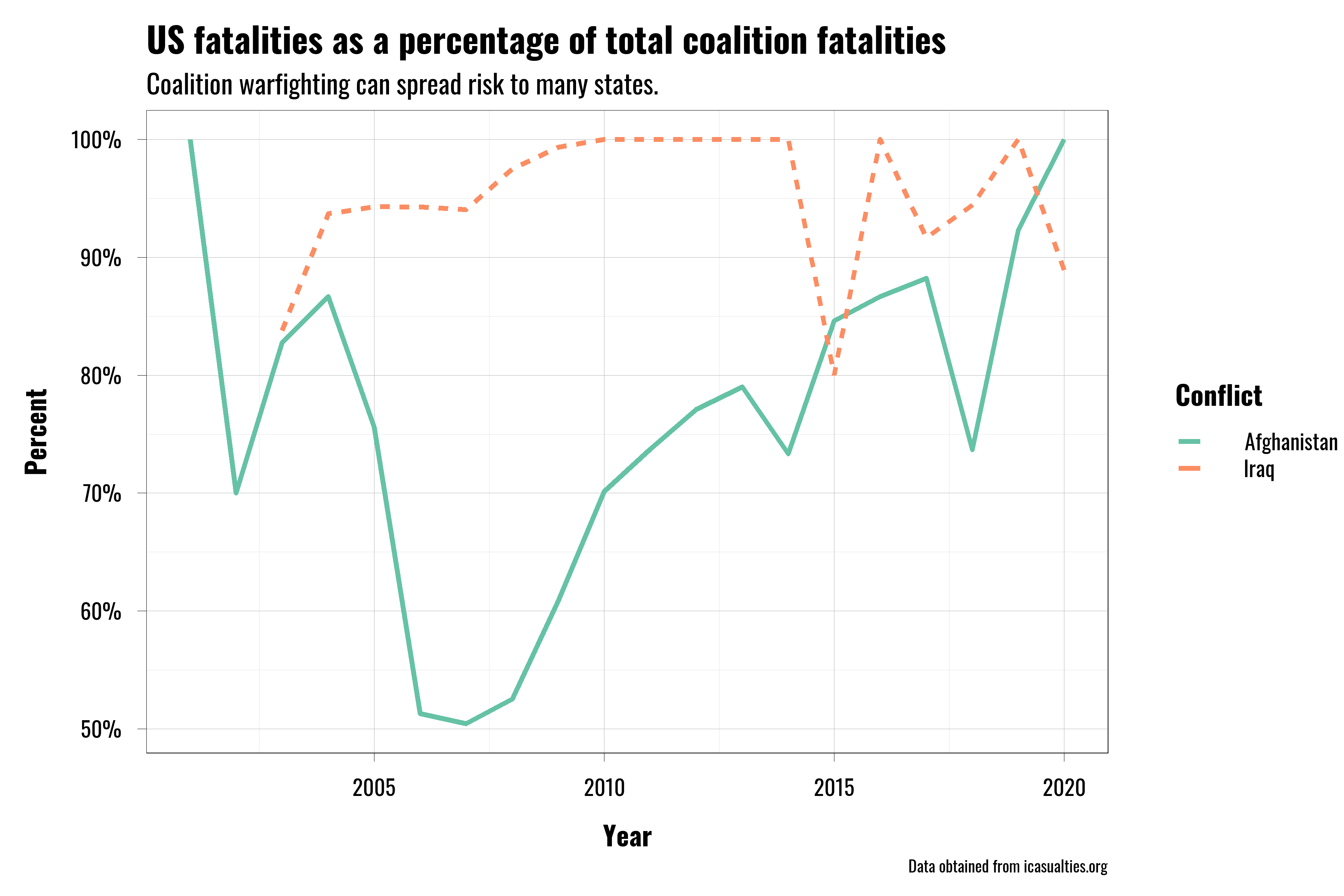US Foreign Policy
Multilateralism in US Foreign Policy
Michael E. Flynn
Kansas State University
Updated: 2021-12-01
Lecture Overview
Defining multilateralism
Historical review of multilateralism in US foreign policy
Costs and benefits
Why Multilateralism?
Defining Multilateralism
Defining Multilateralism
Multilateralism refers to efforts to coordinate behavior between three or more actors.
Historical Overview
Historical Overview
Multilateralism in US foreign policy
For the most part, US foreign policy is mostly characterized by unilateralism through World War I
World War I marks a slight turn towards multilateralism, but there's a lot of resistance
After World War II multilateralism becomes a central component of US foreign policy
Historical Overview
Multilateralism in security, diplomatic, and economic affairs
North Atlantic Treaty Organization (NATO)
United Nations (UN)
General Agreement on Tariffs and Trade (GATT)
International Monetary Fund (IMF)
World Bank
Costs and Benefits
Costs and Benefits
Multilateralism has a range of shorter-term benefits
Pooling resources
Distribute costs
Enhanced legitimacy
Costs and Benefits
Multilateralism has a range of shorter-term benefits
Pooling resources
Distribute costs
Enhanced legitimacy
But there are also costs
Decreased autonomy/constraints on behavior
Possible costs via side payments
More diffuse policy benefits

Notes
- Example of burden sharing in AFghanistan and comparison case of Iraq
- In Afghanistan US endured majority of casualties, but coalition partners also took on a sizeable share of casualties
- In Iraq the US went in with relatively few partner states dedicated to combat operations
- Note this doesn't include other areas of burden sharing like financial support

Notes
- Another example from Iraq and Afghanistan
- US fatalities consistently high as a percentage of total fatalities in Iraq
- In Afghanistan allied states suffered a much higher proportion of the total casualties over time, particularly during the "surge" years around 2009 and 2010.
Costs and Benefits
But even short-term tradeoffs can have long-term benefits
The US was the dominant military and economic power following the War, but how best to wield that power?
A retreat from engagement to unilateralism like after World War I?
Assert dominant power to control other countries?
Something else?
Liberal Hegemony: A term coined by John Ikenberry to describe the nature of the international order that obtained following World War II where the US acted as the dominant power presiding over a rules-based international system to which it subordinated itself (at least in part).
Costs and Benefits
Multilateralism was part of a strategy to balance and advance multiple objectives
Secure Western allies
Deter Soviet aggression
Perpetuate the United States' dominant position for the long-term
Liberal Hegemony entailed a few key components
US sacrificed some autonomy, binding itself to a set of rules-based arrangements in different policy areas
By binding itself the US obtained the buy-in from other countries, increasing the legitimacy and long-term viability of US-led projects
Why Multilateralism?
Why Multilateralism?
Lots of different and important issues, but what do they have in common?
Why Multilateralism?
Lots of different and important issues, but what do they have in common?
Well, there's a shared, fundamental problem underlying these issues
Why Multilateralism?
Lots of different and important issues, but what do they have in common?
Well, there's a shared, fundamental problem underlying these issues
Collective action and coordination problems
Basic problems
Collective Action Problems: Interactions where individuals/groups would all benefit from cooperating to produce some good, but where individual players have an incentive to defect.
Coordination Problems: Coordination therefore, is the orderly arrangement of group effort, to provide unity of action in the pursuit of a common purpose. (Mooney 1947)
ALSO
[A] coordination problem exists if achievement of a particular organizational goal requires that each actor select the appropriate action, and the goal is not fully achieved if all members of the group do not select goal-fulfilling actions. (Camerer and Knez 1997)
| Cooperate | Defect | |
|---|---|---|
| Cooperate | 4,4 | 1,5 |
| Defect | 5,1 | 2,2 |
| Cooperate | Defect | |
|---|---|---|
| Cooperate | 4,4 | 1,5 |
| Defect | 5,1 | 2,2 |
| Cooperate | Defect | |
|---|---|---|
| Cooperate | 4,4 | 1,5 |
| Defect | 5,1 | 2,2 |
| Cooperate | Defect | |
|---|---|---|
| Cooperate | 4,4 | 1,5 |
| Defect | 5,1 | 2,2 |
Why Multilateralism?
Responding to adversaries
Trade and investment policy
Peacekeeping
Human rights and trafficking
Global climate change


